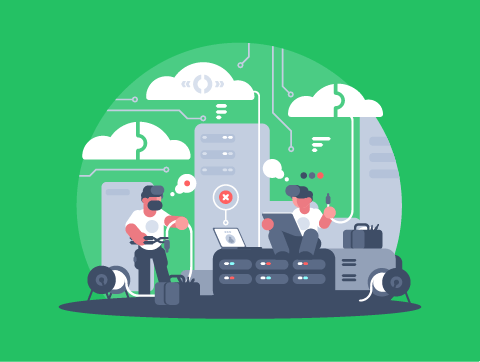Introduction
Last lesson we learnt that a digital device is a piece of physical equipment that uses digital data, such as by sending, receiving, storing or processing it.
We specifically learnt about five different types of digital devices. However, there are several more that we haven’t yet looked at.
In this lesson, we’ll learn about the features of:
- Multifunctional devices
- Digital cameras
- Data capture & collection systems
- Communication devices & systems
Multifunctional Devices
A multifunctional device, sometimes known as an MFD, can perform more than one specific function.
You know how your smartphone is not just a phone? It’s also your camera, music player, GPS, web browser, and much more.
That’s what multifunctional devices are all about—gadgets or machines that can perform multiple tasks that would otherwise require several different devices.
A multifunctional printer is a common example of a multifunctional device. These devices often combine several functions, such as printing, scanning, faxing & photocopying.
Examples of multifunctional devices include multifunctional printers, smartphones, and game consoles.

Purpose of Multifunctional Devices
A multifunctional printer is a device that usually combines printing, scanning, and faxing functions into a single device.
These are particularly popular for use in home offices, where people who work from home do not have the space or money for three separate devices.
Beyond making calls and sending texts, smartphones serve as cameras, portable media players, web browsers, gaming consoles, and navigation systems.
They can even monitor your health, control smart home devices, and act as a wallet!
Game consoles have evolved way beyond just playing video games.
They’re used for media streaming, web browsing, social media, communication & much more.

Digital Cameras
This is a device that can take photos and videos and record them as digital data.
It does this by using a grid of photosensors that convert light into digital pixels that our computer can store, usually on a memory card.
The more megapixels a camera uses to record an image, the higher the quality of the image.
Most digital cameras contain a built-in memory card slot for storing digital pictures or videos directly on the device.
As the memory card is removable, it allows you to then transfer them to another device for storage, sharing, editing or printing.
Examples of digital cameras include digital still cameras and digital video cameras.

Purpose of Digital Cameras
One of the uses of digital cameras is to allow us to share them using a computer.
We often upload pictures and videos to our social networking profiles, like Facebook or Instagram, in order to share them with family and friends.
We might also send them to others as email attachments.
Another reason we use digital cameras is because we can edit the digital pictures & videos on our computer using photo & video editing software.
You’ve often heard of the term ‘photoshopping’ an image, which refers to the use of a software program called Photoshop that we can use to remove blemishes or perform even heavier changes to a photo.

Data Capture & Collection Systems
Data capture & collection systems input & store data through methods other than direct data entry (such as typing on a keyboard).
Instead, the data is entered as a result of a related activity.
This allows the data to be entered into a computer system directly during the data capture stage.
This can greatly reduce the number of human error issues that would often happen when manually entering data.
Examples of data capture & collection systems include barcode scanners, optical mark readers (OMR) and magnetic ink character readers (MICR).

Purpose of Data Capture & Collection Systems
We named three common types of data capture & collection systems:
- Barcode scanners
- Optical Mark Reader/Recognition
- Magnetic Ink Character Reader/Recognition
Obviously, these types of devices are only useful for very specific reasons.
They aren’t flexible enough for the general uses we want at home or even in most workplaces.
Let’s look at the use of each device in turn.

Purpose of Data Capture & Collection Systems
Barcode scanners
Barcode scanners capture data by reading the widths of dark & light bars.
We use these input product items by reading the barcode we find on the back of most products.
When the barcode is read it matches it to a database of products on the computer and returns things like the price of the product.
Optical Mark Reader/Recognition
OMR is used in shops for inputting lottery tickets.
Pre-printed forms like lottery tickets are designed so that when marks are placed on it.
The OMR device can detect what numbers you have selected from the marks’ location on the form.

Purpose of Data Capture & Collection Systems
Magnetic Ink Character Reader/Recognition
MICR is used for verifying that cheques are legitimate.
A special kind of magnetised ink is used to write a code on the bottom of a cheque.
The MICR device reads the magnetic field of the characters to read the code to ensure it is a legitimate cheque.

Communication Devices & Systems
This is a device that is used to move data between two other devices, such as two computers.
It has become almost essential for all of our computing systems to be able to communicate with each other, such as through the internet or other smaller networks.
Communication devices allow us to transmit data between devices over a network in various ways. Sometimes through wired cabling, sometimes wirelessly.
Examples of communication devices include network interface cards (NIC), wireless dongles and routers.

Purpose of Communication Devices & Systems
Just like with data capture & collection systems, each different communication device has a unique use.
One common use throughout each device is that are all used to allow you to transmit data over a network.
However, let’s look at the unique use of each device in turn.

Purpose of Communication Devices & Systems
Network Interface Card
NICs allow data to be transferred to and from a networked computer by connecting an ethernet cable.
We commonly use these with desktop personal computers.
Wireless Dongles
Wireless dongles allow you to either transfer data to a router wirelessly as part of a local area network or connect to a mobile broadband network.
We commonly use these with laptops.
WiFi and even mobile broadband connectivity are often integrated directly into mobile devices like smartphones and tablets.

Purpose of Communication Devices & Systems
Router
A router directs data to its correct destination over a large network.
Wherever two networks meet, a router is required to direct the data in the right direction along the next network in order to reach its destination.
You probably use a router at home to allow the multiple different devices in your house to connect to the same internet connection.

Lesson Summary
Multifunctional devices are capable of more than one function, such as input and output.
Digital cameras are used to take photo and video and store it as digital data.
Data capture and collection systems input and store data through methods other than direct data entry.
Communication devices and systems move data between two other devices, such as two computers.

